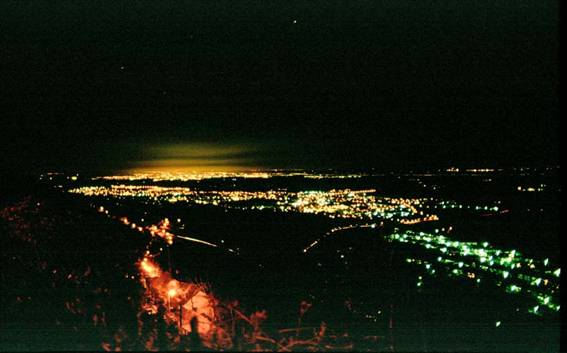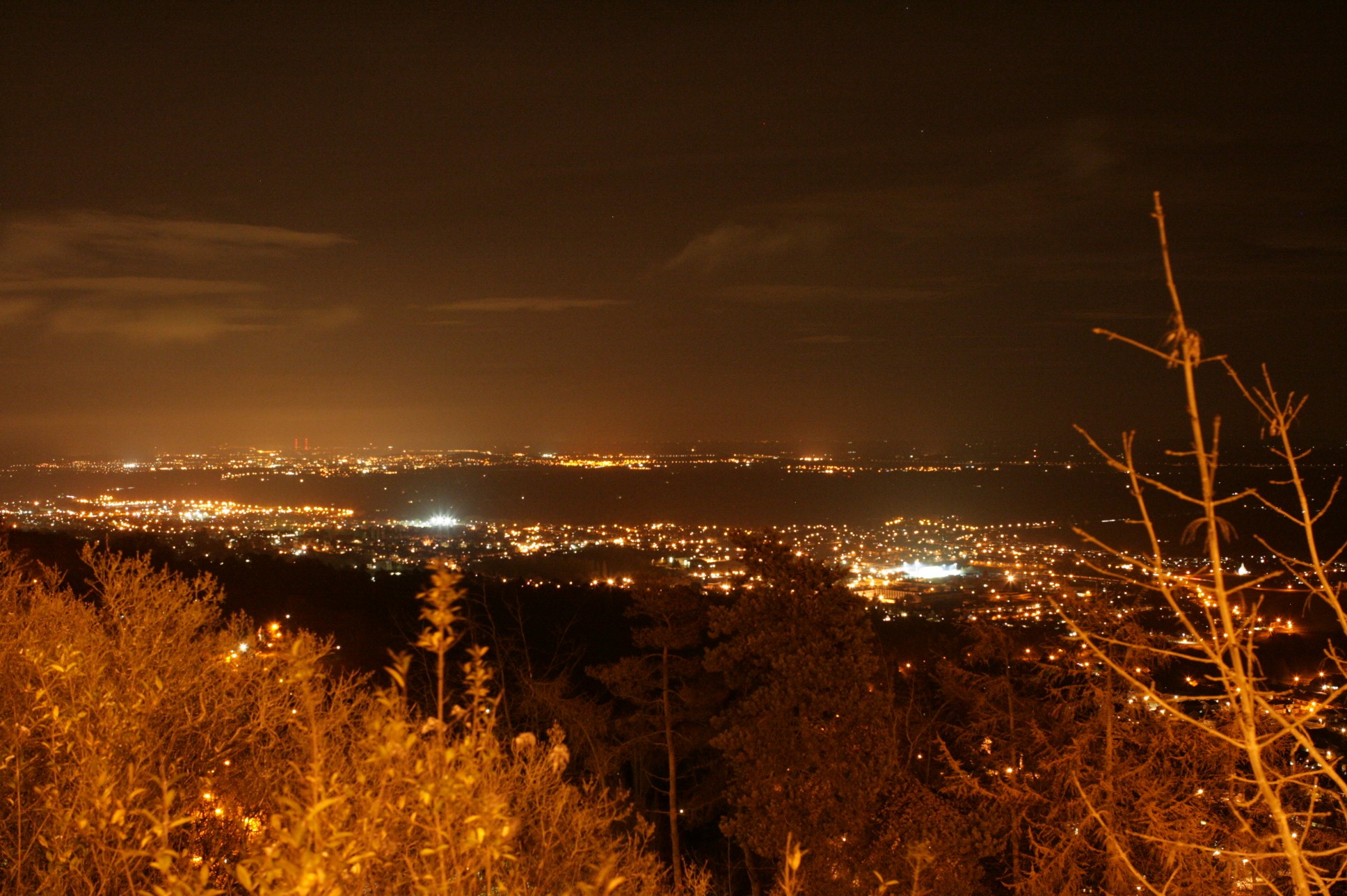How the Light Pollution has changed
In these pictures from the same location on the Malvern Hills I have shown the seven Valley and its illumination, which is mostly from road lights. There is a limit to which these two pictures can be compared as one was done with colour film and the other a digital camera and they have a different colour balance and resolution. Even so, the basic principles of light scattering and pollution can be seen.
Worcester in 2003

The luminaires immediately below are sending a large fraction of their light well above the horizontal to be clearly visible from this location; this is entirely wasted light. Looking further towards the horizon the general mass of light increases and it is the light just above the horizontal that is dominant. That light is illuminating the sky directly over and behind the camera. Indeed from the far side of the hill on the west side looking east, the whole Malvern Hills standout dark against the background scattering from the Seven Valley. Looking in this picture A pall of light can be seen towards the horizon and that is the scattering over the city of Worcester, with its own self generating heat haze of aerosols above it.
Worcester in 2007

Between the two pictures the motorway M5 has been better illuminated with full cut off directional lighting and so is not so visible in the distance. The housing estate in the foreground had its green looking mercury lights replaced with what looks like low pressure sodium, but they are still shining greatly above the horizontal. If they were not, we would not see them.
The striker has generally increased due to the large number of luminaires everywhere. Some may be slightly better directed from better design and overall the sky glow is no better.
Since then, there are now many school sports facilities with illuminated pitches. At least these go off late at night. Upward illumination from the pitches themselves is unavoidable, but any illumination visible from the luminaires themselves is wasted light to the environment . It is false economy to illuminate sports pitches with cheap lights that send the light everywhere as that is expensive energy not going on the pitch. Asymmetric well directed sports lights are expensive but paper themselves in the long run and are now expected by most planning authorities as a requirement.
Worcester in 2011

The full ground vegetation has grown a bit, and we now have the illumination of school sports pitches. They go off late at night and although the luminaire is clearly visible most of the light is directed at the pitch with well-designed optical reflectors.